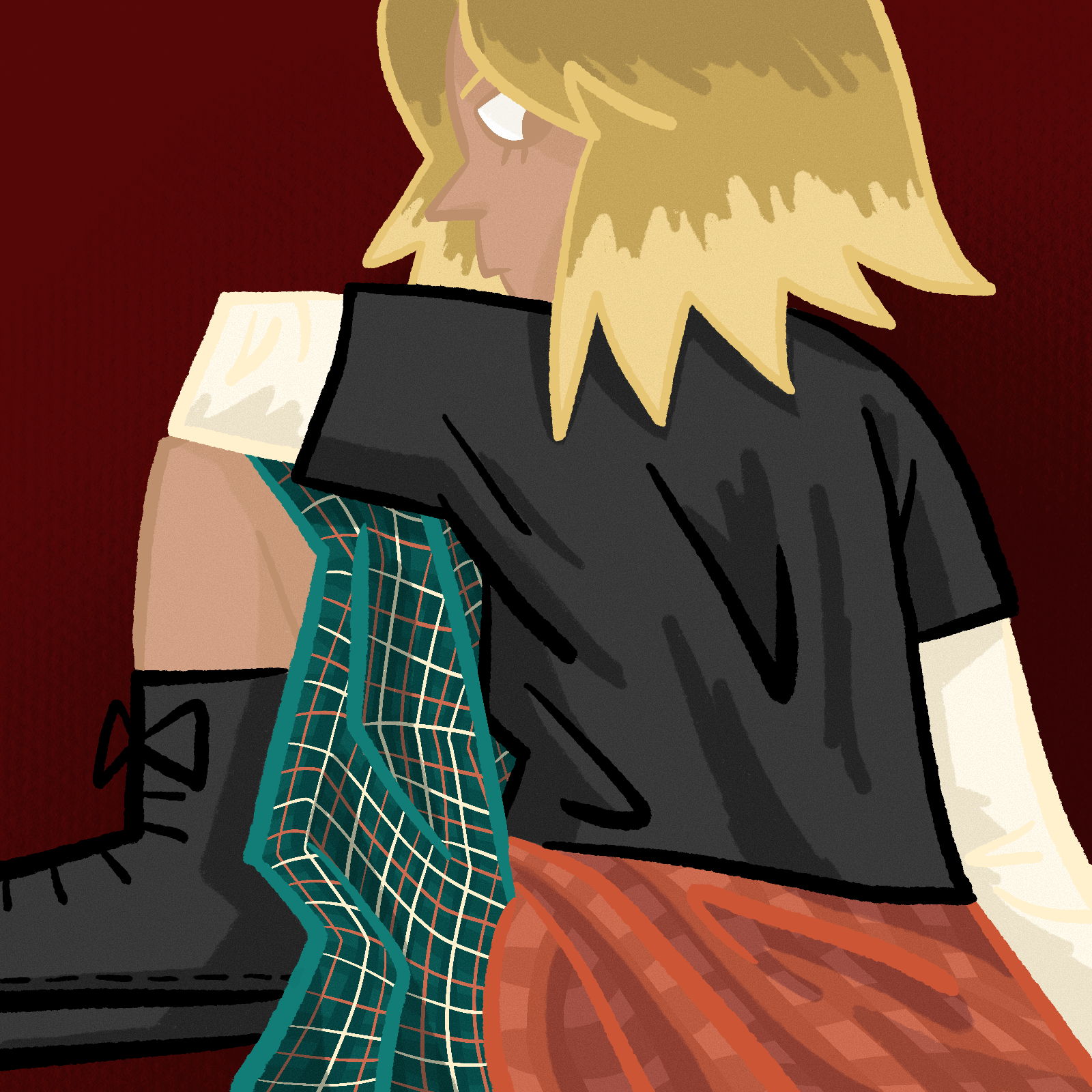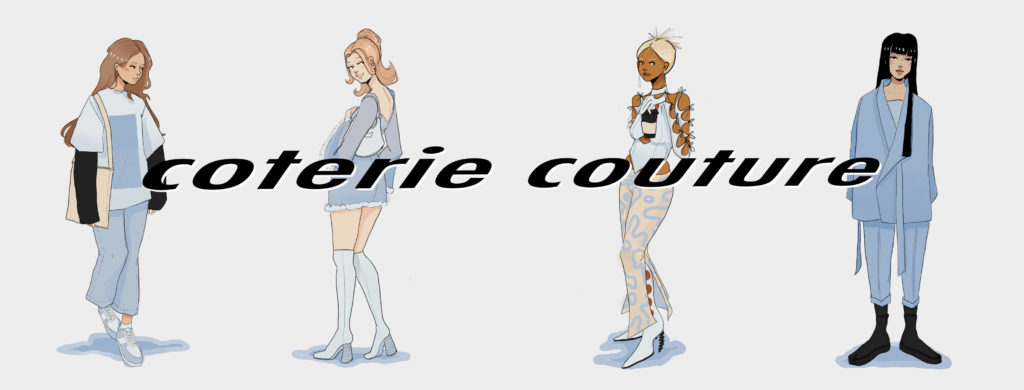Coterie Couture: Grunge aesthetic continues its rebellious legacy with younger generations

(Dani Nalangan/Daily Bruin)
By Natalie Brown
Oct. 20, 2021 4:01 p.m.
What someone wears speaks volumes about who they are as a person, and the same can be said for the styles associated with various movements and cultures. As a cyclical art form, fashion – and its attached politics – almost always reemerges from the past. Follow columnist Natalie Brown in “Coterie Couture” as she chronologically explores the impact of different subcultures and their corresponding fashion each week.

From an underground subculture to mainstream success, grunge is synonymous with the ’90s.
Born out of the Pacific Northwest’s punk scene, Seattle’s grunge was an influential genre whose perceived authenticity intervened with the materialistic, extravagant musical narratives dominating the ’80s. Encompassing political beliefs, music and fashion, the grunge aesthetic remains popular today among artists and audiences alike, who are drawn to its simultaneous nonchalance and rebellion. However, grunge was not always held in such high esteem as it is today, Mark Yarm, author of “Everybody Loves Our Town: An Oral History of Grunge,” said.
“What we know as modern-day grunge emerged from the ’80s … with early records by Nirvana, Soundgarden and Mudhoney,” Yarm said. “Bands like that came out of a time before Seattle was the powerhouse city it is today.”
In the early ’80s, many major bands skipped Seattle in their touring calendars, as it was deemed too far in the middle of nowhere to be frequented by celebrities. Consequently, Yarm said the bands in Seattle had to create their own source of musical entertainment, giving rise to a small but vibrant scene, drawing from punk rock and hardcore motifs. It is out of this scene that the genre of grunge was born, he said.
[Related: Coterie Couture: Glam rock flaunts extravagance, persists in modern ideas of superstardom]
With the popularity of bands like Nirvana and Pearl Jam increasing, Yarm said it was the governing ideologies behind the genre that allowed its music to resonate with so many young adults. Though it is a rather grim genre of music, grunge speaks on issues that matter the most to young people, embodying the antics of Generation X and the uncertainty of their prospects growing up, he said. The musical genre also provided a safe space for social outcasts to convene and celebrate their diversion from the norm, UCLA Library special collections archivist Kelly Besser said.
“The grunge aesthetic is … very much anti-corporate, anti-establishment, … definitely referencing punk music and culture,” Besser said.
With its anti-corporate sentiments, grunge was an underground place where feminists, liberals, anti-establishment supporters and political radicals united to enjoy music that went against the grain of popular songs and artists at the time, Besser said. This anti-authoritarian stance in the music is directly translated into the fashion as well, evidenced in the popularization of thrifting and DIY culture, Besser said. These used clothing pieces were widely accessible for those belonging to all social classes, journalist Gina Vivinetto said, making grunge a much-needed intervention in the strands of inauthenticity and extravagance that then dominated the music scene.
“There was a whole aesthetic and (grunge) mindset that was rejecting glitz, rejecting glamor, rejecting anything … materialistic,” Vivinetto said. “We were just all collectively as a generation, deciding we were very turned off by that.”
An experimental style, grunge is characteristically baggy and frumpy, Vivinetto said. Women who were expected to dress in a certain fashion in the ’80s particularly admired grunge styles, she said, as they allowed for the de-sexualization of fashion and women’s bodies through traditionally male garments like oversized tees and loose-fitting pants. Vivinetto said grunge fashion also allowed for gender fluidity in the opposite direction, evident through male grunge icons playing with the idea of having painted nails, growing out their hair or wearing necklaces.
Though the ’90s have come and gone, the music and fashion elements of grunge still exist among artists and fans alike. However, each has been imbued with a modern twist. In the fashion industry, designer brands like Marc Jacobs have adopted grunge-inspired styles, altering the thrifty discount imagery and replacing it with a revamped high-end version.
[Related: Coterie Couture: Bohemianism fashion, art continues to counter the mainstream]
In terms of the post-grunge musical movement, however, Yarm said older artists like Nickelback, Creed and Lana Del Rey are some examples of musicians who draw upon the stylistic elements of grunge, while younger modern pop artists like Billie Eilish embody ideas of rejecting the fashion norms that grunge advocates for – specifically through her varying hair colors and loose-fitting styles. Regardless of its popularity among celebrities, Yarm said grunge has a following that will allow its legacy to continue forward for decades to come.
“Every couple of years I hear about grunge fashion being (back),” Yarm said. “It never quite seems to go away. You go anywhere and see people in flannel and (Dr. Martens). … You certainly see people still adopting some of the (grunge) styles of the time.”


